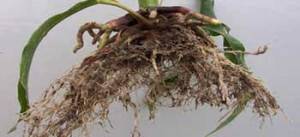Uneven Corn Stands: The Why and How
Lots of seed corn got planted early when temperatures were cool and moisture was abundant. As a result, I’m hearing reports of uneven corn emergence. Some farmers are asking how to remedy the situation. Others are questioning whether they should replant portions of their fields.
Let’s begin by explaining what causes uneven corn stands and then address whether or not anything should be done. Uneven corn stands most often are the result of these four circumstances:
- Improper equipment calibration/maintenance;
- Soil conditions at and after planting;
- Pests; and
- Poor management practices.
At this point in the growing season, I’m going to focus on uneven stands that are a result of conditions at planting time including equipment calibration and soil conditions. Most farmers do a very good job and problems arising from equipment calibration or maintenance are few and far between.
Problems are more often to arise when conditions for doing fieldwork and planting are good for an extended period of time. Farmers tend to keep working until they get rained out, so they may not take time for regular equipment maintenance and calibrations if the sun shines for extended periods of time.
Remember to check your equipment, especially your planter, before you head to the next field! Failure to maintain your planter can result in skips and doubles. University studies have found that skips are more limiting to overall yield in most situations but both can have a negative effect.
In addition to having your equipment properly calibrated, it’s important to plant in fit soil conditions. Uneven emergence may result from soils that are either too wet or too dry. Soil moisture can differ because of varying soil types, topography and tillage practices. The difference can be seen across whole fields, in certain areas of a field, or even from one row to the next.
Rainfall patterns leading up to planting are critical to emergence. Seeds placed in dry soil will not germinate without rainfall. Rains that are spotty may cause uneven stands.

Planting in soils that are too wet can cause lower germination, uneven emergence and growth, restricted root growth (as pictured), and stunted seedlings.
On the other hand, working fields that are too wet also causes problems. Soil that is too wet will cause cloddy seedbeds, resulting in poor seed-to-soil contact and uneven emergence.
Another concern, especially in continuous corn and no-till fields, is how residue from the previous crop will affect the current crop. Uneven distribution of residue can result in differing soil temperatures across the field, which causes plants to germinate irregularly.
In addition, soil temperature may lead to uneven emergence. This spring a cold front caused soil temperatures to decrease after many acres of corn were planted. Look at planting when soil temps are consistently above 50° F and are expected to rise! The ideal soil temperature for planting corn is 60° F.
To minimize the risk of uneven stands due to soil conditions, carefully monitor each field. Check the moisture at different levels. I like to see corn planted at 2 inches deep when conditions are optimal, but I have seen corn planted as deep as 3” without very many emergence problems. Keep in mind, the deeper you plant, the greater chance there is the seed “running out of gas” before it emerges, especially when there’s a heavy rainfall and the soil surface crusts over.
There are many factors that can contribute to delayed emergence. So what should you do about uneven emergence? Assess if the problem really warrants remediation. Check with a trusted agronomist if you’d like another opinion.
Rather than trying to fill in the gaps, it’s usually best to till up a field or a portion of a field prior before replanting. Click below for additional replanting resources: